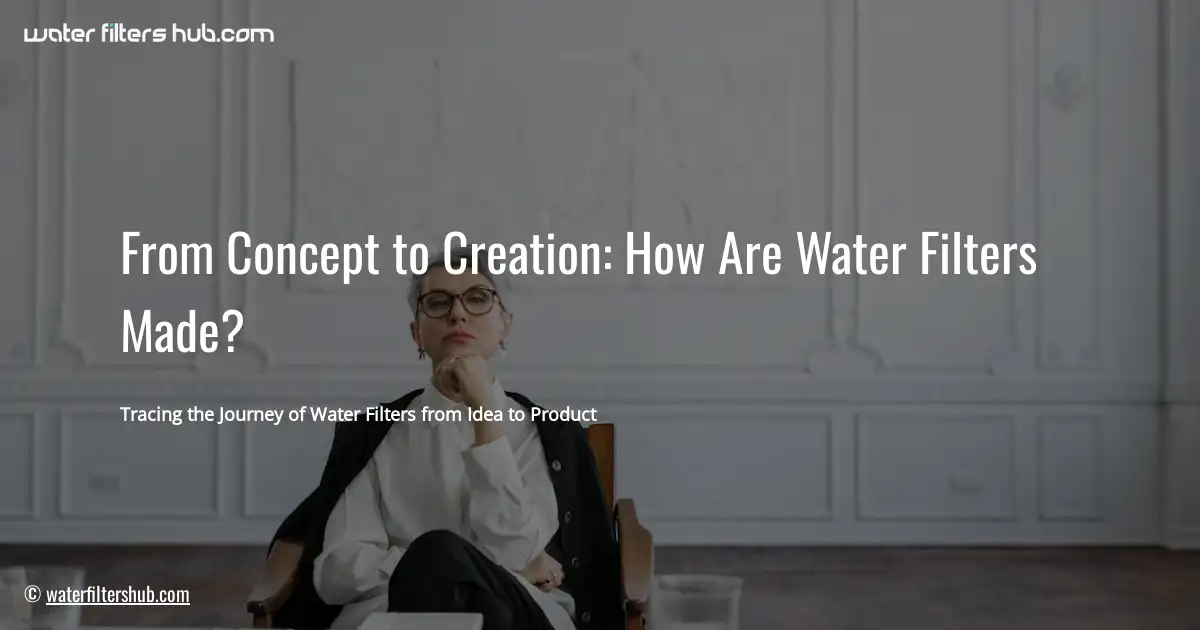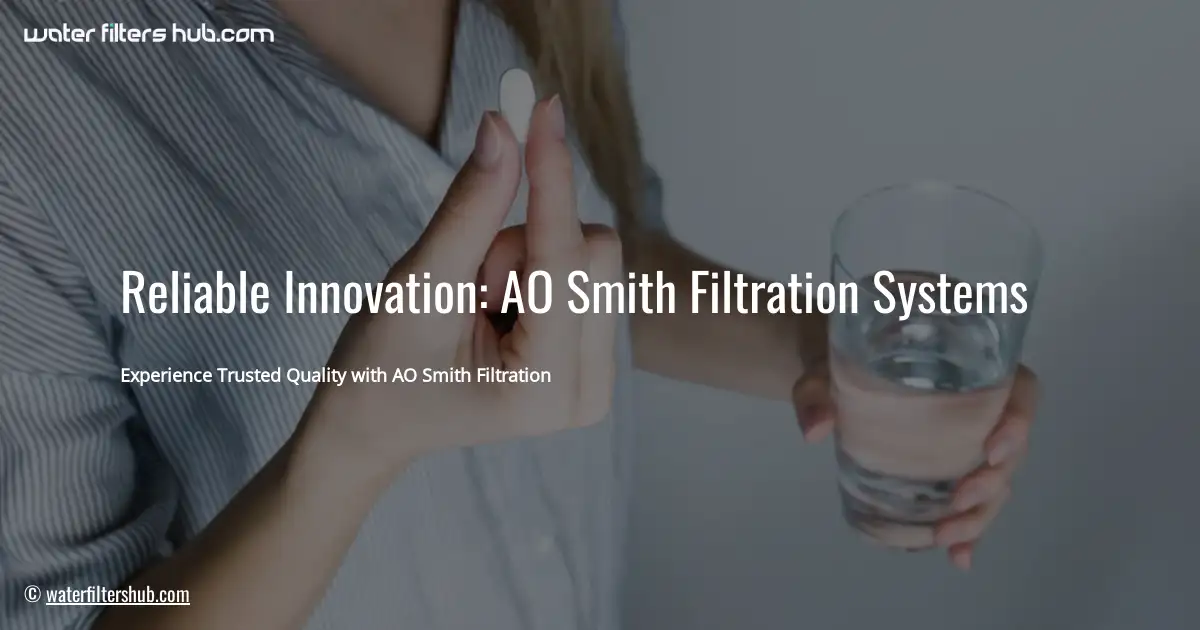Tracing the Journey of Water Filters from Idea to Product
1. Introduction
Water, the elixir of life, sustains our very existence. Yet, access to clean water remains a global challenge. Water filters emerge as unsung heroes, silently safeguarding our health by removing impurities and contaminants. Their intricate journey from concept to creation is a testament to human ingenuity and our unwavering pursuit of a healthier tomorrow.
Conceptualization and Design
Brainstorming and Research
The journey of a water filter begins with a spark of inspiration. Engineers and scientists brainstorm innovative ideas, drawing inspiration from nature’s own filtration systems. They delve into research, exploring different filtration methods and materials, like a detective searching for clues.
Designing the Blueprint
Once the concept is clear, the design phase takes shape. Engineers sketch out the filter’s structure, meticulously selecting materials for each component. They consider the filter’s size, shape, and durability, ensuring it can withstand the rigors of daily use. It’s like designing a masterpiece, where every detail matters.
Material Selection
Choosing the right materials for a water filter is crucial to ensure its durability, efficiency, and cost-effectiveness. Filter housings can be made from various plastics, such as ABS or polypropylene, or metals like stainless steel. These materials must be resistant to corrosion, withstand pressure, and be easy to clean.
The membrane, the heart of the filter, is typically made from polymeric materials like polysulfone or polyethersulfone. These materials offer excellent filtration efficiency, chemical resistance, and durability. The pore size and material composition of the membrane determine the specific contaminants it can remove.
Other components, such as O-rings and seals, must be made from materials compatible with the filter housing and membrane. They should prevent leaks and ensure a tight seal to maintain filtration integrity.
By carefully considering these factors, manufacturers can select the optimal materials for their water filters, ensuring they meet the desired performance and longevity requirements.
Manufacturing the Filter Housing
The filter housing is the backbone of the water filter, protecting the delicate membrane inside. To create this sturdy shell, manufacturers employ two primary techniques: molding and extrusion.
Molding involves injecting molten plastic or metal into a mold and allowing it to cool and solidify. This method is ideal for complex shapes and ensures a precise fit for the filter components. Extrusion, on the other hand, involves forcing molten material through a die to create a continuous profile. This process is faster and more cost-effective, making it suitable for simpler housing designs.
The choice between molding and extrusion depends on factors such as the desired shape, material properties, and production volume. Both techniques result in durable and reliable filter housings that safeguard the membrane from external damage and contamination.
Creating Openings for Water Inlet and Outlet
Once the filter housing is formed, it’s time to create the openings for water to enter and exit. These openings are crucial for ensuring efficient filtration and preventing leaks.
Manufacturers use precision cutting tools to create the inlet and outlet ports. The size and shape of these ports are carefully designed to match the diameter of the connecting pipes and ensure a secure fit. In some cases, additional features such as threads or O-rings are added to enhance the seal and prevent water leakage.
These seemingly small openings play a vital role in the overall performance of the water filter. By allowing water to flow smoothly through the system, they facilitate the removal of contaminants and deliver clean, healthy water to our homes.
Membrane Fabrication 🎭
The heart of a water filter lies in its membrane, a semipermeable barrier that selectively allows water molecules to pass through while trapping contaminants. The pore size and material composition of the membrane determine its filtration efficiency and specificity.
Imagine a microscopic maze, where water molecules are like tiny marbles trying to navigate through a series of tiny holes. The pore size of the membrane acts as the gatekeeper, allowing only marbles of a certain size to pass through. This ensures that contaminants larger than the pores, such as bacteria and viruses, are effectively blocked.
The material composition of the membrane also plays a crucial role. Different materials, such as ceramic, activated carbon, and nanofibers, offer varying degrees of filtration capabilities. Ceramic membranes, for instance, are known for their durability and resistance to fouling, while activated carbon membranes are highly effective in removing organic contaminants.
By carefully controlling the pore size and material composition, manufacturers can tailor the membrane to specific filtration needs, ensuring that the water that reaches our homes is clean, safe, and refreshing.
HOW ARE WATER FILTERS MADE ON YOUTUBE
Assembling a water filter is like a delicate dance, where each component must find its perfect place to create a harmonious symphony of filtration. The filter housing, membrane, and other parts are carefully combined, ensuring a snug fit and precise alignment. This meticulous process is crucial for optimal performance, as even the slightest misalignment can compromise the filter’s ability to remove contaminants effectively.
Just as a conductor orchestrates a symphony, the manufacturer meticulously assembles the filter’s components, ensuring that each part plays its role flawlessly. The membrane, the heart of the filter, is carefully positioned within the housing, creating a barrier that allows only purified water to pass through. Other components, such as seals and gaskets, are precisely placed to prevent leaks and ensure a secure connection.
The result of this intricate assembly process is a water filter that stands as a testament to precision engineering. It’s a device that silently protects our health, removing harmful contaminants and delivering clean, refreshing water to our homes and communities.
Verifying Filtration Efficiency 📊
Like a detective scrutinizing evidence, water filters undergo rigorous testing to ensure they’re up to the task of protecting our precious H2O. Filters are subjected to a battery of tests to measure their ability to remove specific contaminants. They’re put through their paces, filtering water spiked with known amounts of impurities. The results are then carefully analyzed to determine the filter’s efficiency in removing these contaminants.
Meeting Industry Standards 🏆
Just like students striving for top grades, water filters must meet industry standards to earn their place in homes and businesses. These standards are set by organizations like the National Sanitation Foundation (NSF) and the Water Quality Association (WQA). Filters are tested against these standards to ensure they remove specific contaminants to a certain level. Passing these tests is like getting a gold medal in the water filtration Olympics, proving that the filter is a champion in protecting our water.
PACKAGING AND DISTRIBUTION 📦🚚
Once the water filters are meticulously crafted, they embark on a journey to reach thirsty consumers. They’re carefully packaged to withstand the rigors of transportation, ensuring they arrive intact and ready to purify. Distribution channels are established, like arteries carrying life-giving water to homes and businesses.
Like a symphony of logistics, filters are transported to distribution centers, where they’re stored in optimal conditions. From there, they’re dispatched to retailers, where they eagerly await their moment to quench the thirst for clean water.
Installing and maintaining your water filter is like giving your water a superhero makeover! 🦸♀️ It’s a simple yet crucial step to ensure you’re sipping on the purest H2O. Just follow these easy steps:
- Find the perfect spot: Choose a location where water flows freely, like under your kitchen sink or on your fridge door.
- Connect the filter: Attach the filter to the water line and tighten it securely.
- Replace regularly: Change the filter as recommended by the manufacturer, usually every 6-12 months. It’s like giving your water a fresh start!
Remember, regular maintenance is key to keeping your water filter in tip-top shape. It’s like giving your car an oil change – essential for optimal performance. So, stay vigilant, my friend, and enjoy the sweet taste of filtered water! 💦
Conclusion
The Culmination of Innovation and Ingenuity
The journey of water filters from concept to creation is a testament to human ingenuity and the tireless pursuit of clean, healthy water. Through meticulous research, advanced manufacturing techniques, and rigorous testing, we have harnessed the power of filtration to safeguard our most precious resource.
“Water is the lifeblood of our planet, and water filters are the guardians of its purity,” we often say. As we continue to innovate and refine our filtration methods, we can look forward to a future where access to clean water is a reality for all.
The Impact of Clean Water
The benefits of clean water extend far beyond quenching our thirst. It nourishes our bodies, protects our health, and fosters vibrant communities. By investing in water filtration, we invest in our own well-being and the well-being of generations to come.
“A healthy body is a temple, and clean water is its foundation,” we often say. Let us embrace the power of water filtration and strive to make clean water a fundamental right for everyone.
STUDENT PROJECT: MAKE A WATER FILTER | NASA/JPL EDU
WATER FILTRATION – AN OVERVIEW | SCIENCEDIRECT TOPICS
HOW TO REPLACE WATER FILTER CARTRIDGE
HOW MUCH ARE WATER FILTERS
HOW TO OPEN WATER FILTER CANDLE
WHAT WATER FILTERS ARE BEST
HOW GOOD ARE BRITA WATER FILTERS







Leave a Reply